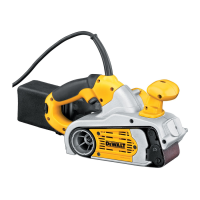4
b. A dust mask or respirator should be worn by all persons entering the work area.
The filter should be replaced daily or whenever the wearer has difficulty breathing.
NOTE: Only those dust masks suitable for working with lead paint dust and fumes
should be used. Ordinary painting masks do not offer this protection. See your
local hardware dealer for the proper AS/NZS1716-approved mask.
c. NO EATING, DRINKING or SMOKING should be done in the work area to prevent
ingesting contaminated paint particles. Workers should wash and clean up
BEFORE eating, drinking or smoking. Articles of food, drink, or smoking should
not be left in the work area where dust would settle on them.
ENVIRONMENTAL SAFETY
a. Paint should be removed in such a manner as to minimize the amount of dust
generated.
b. Areas where paint removal is occurring should be sealed with plastic sheeting of
4 mils thickness.
c. Sanding should be done in a manner to reduce tracking of paint dust outside the
work area.
CLEANING AND DISPOSAL
a. All surfaces in the work area should be vacuumed and thoroughly cleaned daily
for the duration of the sanding project. Vacuum filter bags should be changed
frequently.
b. Plastic drop cloths should be gathered up and disposed of along with any dust
chips or other removal debris. They should be placed in sealed refuse receptacles
and disposed of through regular trash pick-up procedures. During clean up,
children and pregnant women should be kept away from the immediate work
area.
c. All toys, washable furniture and utensils used by children should be washed
thoroughly before being used again.
SAVE ALL WARNINGS AND INSTRUCTIONS FOR
FUTURE REFERENCE
• Avoid prolonged contact with dust from power sanding, sawing, grinding,
drilling, and other construction activities. Wear protective clothing and wash
exposed areas with soap and water. Allowing dust to get into your mouth, eyes,
or lay on the skin may promote absorption of harmful chemicals.
WARNING: Use of this tool can generate and/or disburse dust, which may cause
serious and permanent respiratory or other injury. Always use AS/NZS1716-approved
respiratory protection appropriate for the dust exposure. Direct particles away from
face and body.
WARNING: Always wear proper personal hearing protection that conforms to
AS/NZS1270 during use. Under some conditions and duration of use, noise from this
product may contribute to hearing loss.
• The label on your tool may include the following symbols. The symbols and their
definitions are as follows:
V ................. volts A ...............amperes
Hz ............... hertz W ..............watts
min ............. minutes ...........alternating current
........ direct current ...........alternating or direct current
.............. Class I Construction
n
o ..............no load speed
................... (grounded) n ................rated speed
.............. Class II Constr uction .............earthing terminal
................... (double insulated) ..............safety alert symbol
…/min ........ per minute BPM ..........beats per minute
IPM .............impacts per minute RPM ..........revolutions per minute
SPM ............ strokes per minute sfpm ..........surface feet per minute
Precautions to Take When Sanding Paint
Sanding of lead based paint is NOT RECOMMENDED due to the difficulty of
controlling the contaminated dust. The greatest danger of lead poisoning is to
children and pregnant women.
Since it is difficult to identify whether or not a paint contains lead without a chemical
analysis, we recommend the following precautions when sanding any paint:
PERSONAL SAFETY
a. No children or pregnant women should enter the work area where the paint
sanding is being done until all clean up is completed.

